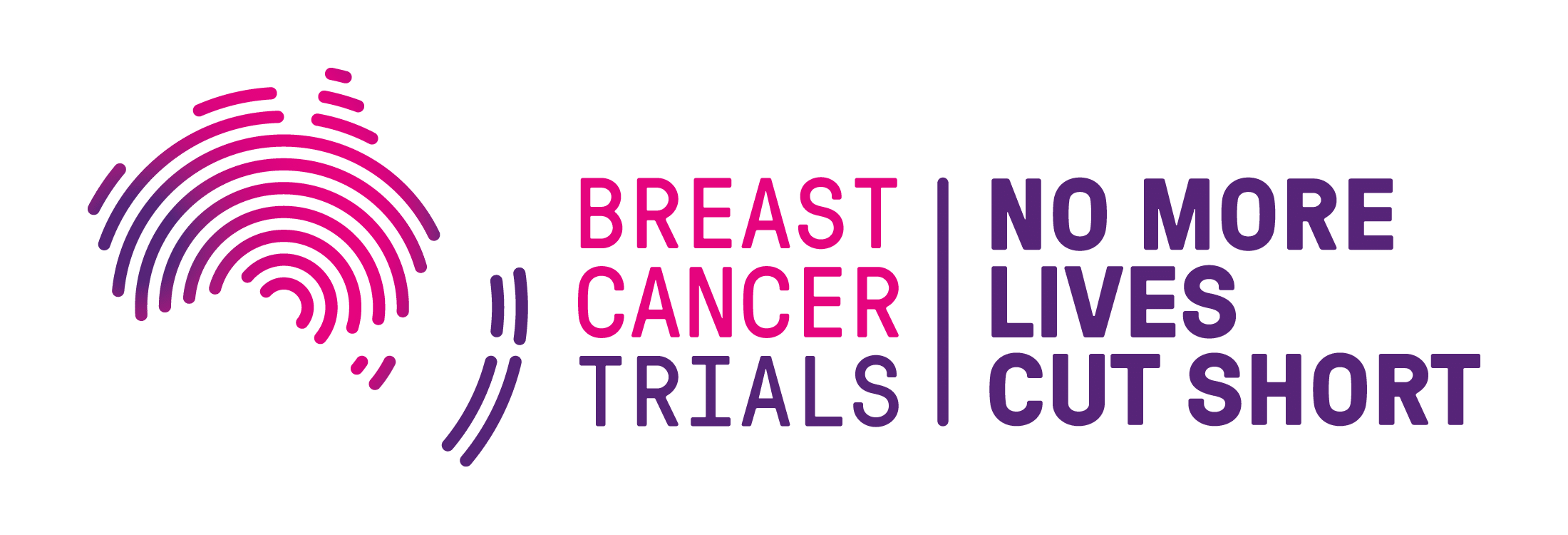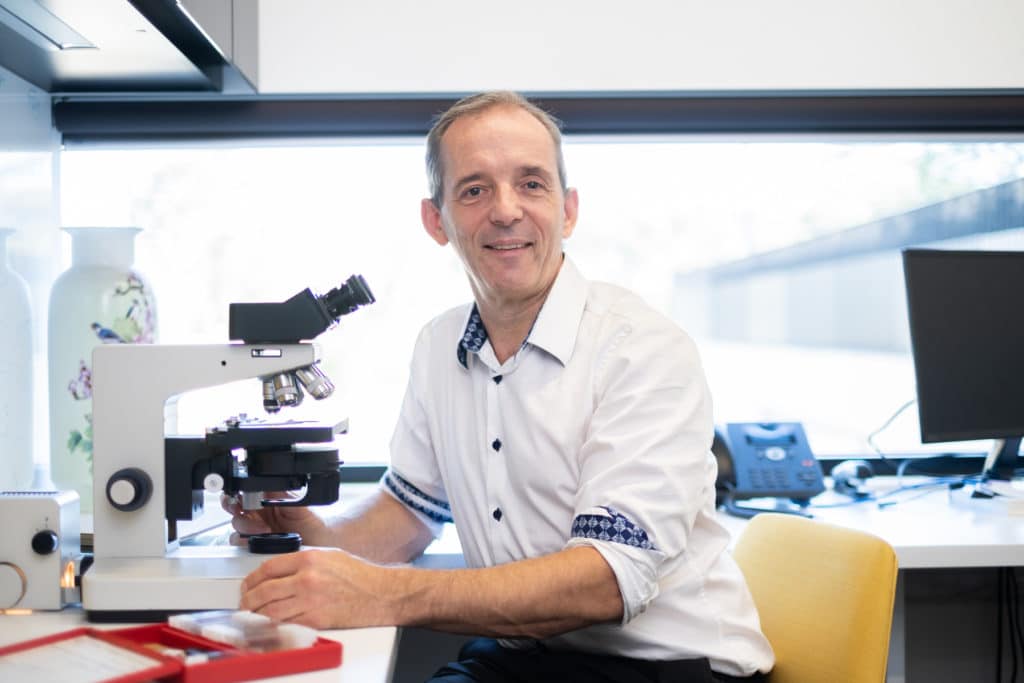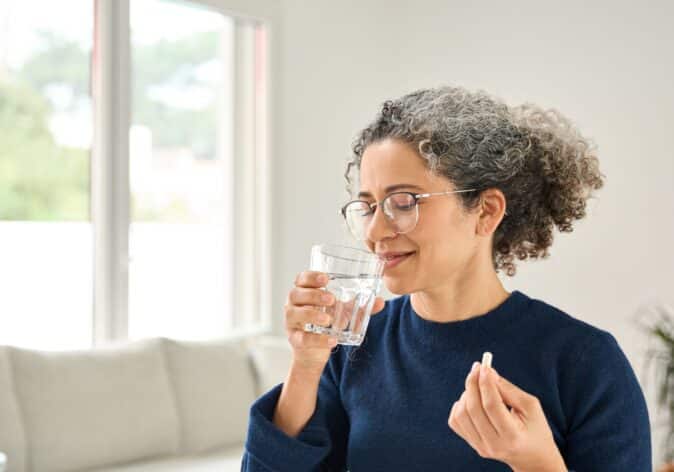Associate Professor Andrew Redfern is a Medical Oncologist and translational researcher from Western Australia, with a particular interest in understanding why breast cancer treatments may or may not work in certain groups of people. Part of his focus is working with Aboriginal Australians to try and answer this question.
We spoke with Associate Professor Redfern about the importance of addressing adverse breast cancer outcomes in Indigenous Australians.
“So in Aboriginal Australians in Western Australia in particular, breast cancer is less common than the general population and we’ve been looking at some of the reasons for that in addition. The higher mortality rates for Aboriginal Australians, we’ve found partly relate to what has been studied in all the other states, that is that they are at a slightly later stage, meaning larger cancers when they come to medical services.”
“These patients are often also more remote in terms of location and therefore, there is a slight reduction in the comprehensiveness of services available. However, we’ve also looked at the biology of breast cancer in Aboriginal Australians. We’ve looked at the types of cancer they get and how they behave, and we found many differences there also. We found they get more aggressive types of breast cancer and we’ve found they have more vitamin deficiencies that make the cancer more aggressive.”
“We’ve also found that the immune system interacts differently with the cancers and may cause further problems. And so there are many different facets to why there’s a worse outcome, all of which we’re trying to address.”
Listen to the Podcast
We spoke with Associate Professor Redfern about the importance of addressing adverse breast cancer outcomes in Indigenous Australians.
What is the impact of lower screening rates in these communities?
“Certainly, lower screening rates are a factor in the high mortality for the Aboriginal Australians, but they’re just one factor. We do see that screening rates have been 15 to 20 percent lower over the last 20 years.”
“There has been some success with both the Aboriginal populations, so the screening rates for both have risen, but there’s been this continual gap of about 15% lower in Aboriginal people, and there are efforts going on to try and address that also.”
How is data collected in Australia about breast cancer in Indigenous communities?
“You can work out the kind of cancers and how large they are and how far spread they are from central data. There are many things that are important to survival in Aboriginal Australians that really need you to be on the ground and collecting data from the patient as it develops.”
“There are things like exercise levels and diets which can influence outcomes. And also, the degree to which people are compliant or adherent to their medications. So we’ve seen both in remote populations and in Aboriginal populations that side effects are worse on some of the drugs for breast cancer, and we’re seeing then there’s higher rates of dropping off those drugs, which also will be affecting survival rates.”
“Regarding policy and services for Aboriginal Australians, we’ve found that firstly when you’re giving intravenous treatments like chemotherapies in Western Australia in particular, all of the chemotherapies are given in the lower third of the state. And some people are travelling a couple of thousand kilometres in order to get just one course of chemotherapy for an hour.”
“Regarding the upper two thirds of Western Australia, which is an enormous landmass, we’ve got people travelling two thousand kilometres for a single cycle of chemotherapy. We identified where Aboriginal patients were most clustered and we’ve put in three video chemotherapy services. One is in Broome, one is in Karratha, and then there’s another one in Narrogin, which is a smaller town towards the south of the state.”
“And people can go to those services. We video link the Oncologist to them and they have a talk and discuss any side effects. And then there’s a local chemotherapy nurse who can deliver their treatment and that’s saving them having to travel vast distances.”
“The other thing we’ve got in the works is we’re setting up telephone help services for people on chemotherapy tablets to both manage side effects and to make sure that their prescriptions are up to date and to get those to people to try and get more patients to the end of their tablet treatments and hopefully improve results that way also.”
“One of the things I think we could do better, although it’s a little bit tricky because it’s fragmented, is to look at the language issues there. Most Aboriginal people speak English, but there are some that don’t, and there are a number of Indigenous languages in Western Australia, at least 20. And so, providing materials in each of those languages is difficult. That contrasts in New Zealand where they have excellent Māori language materials, as there is a bigger population speaking that language there.”
Is there sufficient information to assist these communities with education about breast cancer?
“It’s certainly for Western Australia in terms of culturally appropriate information. There are now culturally specific information sheets and telephone lines through the Cancer Council in Western Australia, addressing things from the Aboriginal perspective, both about different treatments, such as chemotherapy and radiotherapy, and separate resources for different types of cancer.”
Is there an under representation of Aboriginal and Torres Strait Islanders in the health service?
“Certainly, when we look at Indigenous people working in health services and in science as well, there is a shortage, and we’d like to recruit more people. We in fact have a position for an Indigenous healthcare worker looking at expanding these services to remote areas and we’re still looking to recruit somebody after over a year now.”
“So, it is something that there’s a short supply of. We do now have contacts in each of the states, though, and we have three scientists, all of whom have indigenous heritage also working in the area, as well as two people in the medical service side.”
“I think it’s quite easy to overlook things when we make a lot of assumptions. We assume similarities when sometimes there are distant differences. And so, some of these services need to be structured around certain aspects of Indigenous culture. For example, in some Aboriginal communities the Elders set times for men’s and women’s business where men attend to business at certain times of the year and women at certain other times of the year.”
“So, for example, if you have your mammogram van arriving and it’s a time when it’s not women’s business time, then you will likely get a very low uptake. Whereas if you coordinate it appropriately, then you’ll likely find a much-improved uptake.”
“I think for other states, I would certainly encourage people to look at the cancer types and what’s going on with the biology, the nutritional status, and risk factors in the patient as we’ve found them to be very important. And also looking at the cultural issues around the timing of treatments and what the barriers are, and addressing those as there are some surprising but very addressable things that we’ve found.”
How do we address these poorer breast cancer outcomes in Indigenous Australians?
“Well, one of the core things we’re enacting to try and improve the outcomes in the Aboriginal Australians in WA is looking at a centralised kind of advisement service. Each person who gets cancer, when they get their biopsy or their surgery, their specimen goes to a central pathology laboratory, and if the patient identifies as indigenous, then that information goes with the sample to the cancer registry.”
“And we’re identifying recently diagnosed Aboriginal people, and we have central discussions of cases with a panel of experts, including people with Indigenous cultural expertise. And then we liaise with each person’s local treatment team to try and devise the best plan, both with the information we’ve already learned from our research and with further cultural input from experts in that field.”
“Certainly, regarding clinical trials, there does appear to be a lower rate of recruitment from the Aboriginal population, because the rates of people are low and there’s a very large sector of the community that is remote. So, there’s a lot of the things we can do to address Aboriginal trial recruitment, and a lot would be dealt with by addressing geographical recruitment.”
“However, also it’s important to have culturally appropriate materials to explain trials. And though we have materials on trials in general, we don’t have anything yet for Aboriginal or other Indigenous peoples. When we look at the types of cancers Aboriginal people are being diagnosed with in Western Australia, we suspect it’s due to the difference in risk factors, in the Aboriginal population compared to the non-Aboriginal population.”
“In particular they have more aggressive cancers as obesity is somewhat higher and there is a higher level of alcohol consumption. There are also lower vitamin D levels in Aboriginal patients, and that can drive aggressive types of breast cancer also.”
“There is also a lack of risk factors for the better prognosis cancers, the hormone driven ones. As Aboriginal women tend to have more children, they have their children earlier, they’re more likely to breastfeed, and they’re less likely to use oral contraceptives and hormone replacement therapy. So, part of it may be that they’re just getting less low risk cancers, which makes the high-risk cancers a bigger proportion.”
“Regarding the bigger tumour size that we see in Aboriginal women, I think this is due to two factors here. There is the fact that screening is lower and so patients are likely coming at a slightly later stage, with their tumours. But also, these more aggressive types of cancer we’re seeing in the Aboriginal people grow faster. So, when we look at all types of people, we find that these aggressive cancers tend to be larger than the lower risk types and so that’s likely a factor also.”
Support Us
Help us to change lives through breast cancer clinical trials research



